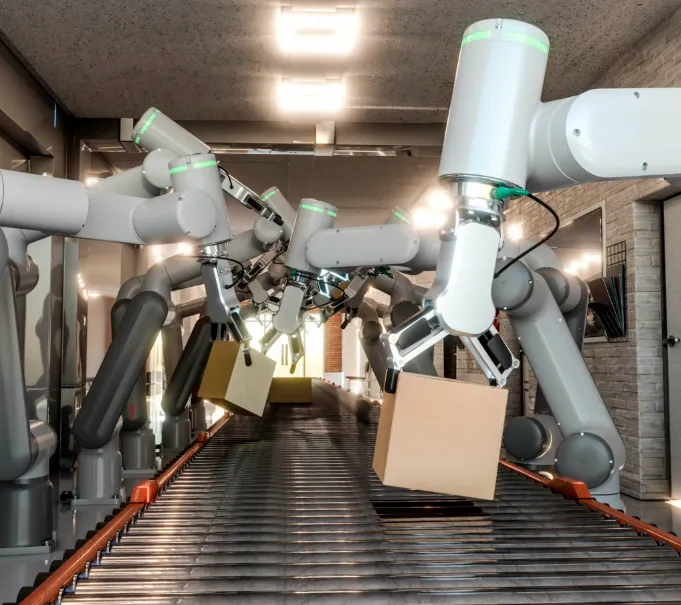Industrial robots come in various designs, each suited for specific tasks in different industries. Understanding the different types of robots can help you choose the right one for your manufacturing needs. Here, we will discuss six common types of industrial robots, including Cartesian, SCARA, cylindrical, delta, polar, and articulated robots, and how each type is used in various applications.
1. Articulated Robots: Versatility in Motion
Articulated robots are perhaps the most common type of industrial robot, characterized by rotary joints. These robots typically feature from two to ten or more joints, which provide a wide range of movement. Each joint, known as an axis, adds another degree of freedom to the robot’s range of motion. This design allows articulated robots to perform highly flexible tasks with a greater degree of mobility.
Uses of Articulated Robots:
- Packaging
- Machine tending
- Assembly tasks
- Arc welding
- Material handling
2. Cartesian Robots: Linear Precision
Also known as gantry or rectilinear robots, Cartesian robots use three linear joints to move along the X, Y, and Z axes in a Cartesian coordinate system. These robots are ideal for applications requiring precise linear motion, and they often include an attached wrist for rotational movement. Their simplicity and precision make them perfect for tasks that involve straightforward linear movements.
Uses of Cartesian Robots:
- 3D printing
- CNC automation
3. Cylindrical Robots: Combining Rotation and Linear Motion
Cylindrical robots feature at least one rotary joint at the base and at least one prismatic (linear) joint connecting the links. These robots operate within a cylindrical-shaped work envelope and are typically used for tasks that require both rotational and linear movement. The combination of these motions allows for greater flexibility and efficiency.
Uses of Cylindrical Robots:
- Coating applications
- Assembly
- Machine tending
4. Polar Robots: Spherical Flexibility
Polar robots, also known as spherical robots, are designed with a twisting joint at the base along with two rotary joints and one linear joint. This configuration creates a spherical-shaped work envelope and allows for efficient movement within that space. Polar robots are often used for tasks that require a combination of rotational and linear movements in a spherical range.
Uses of Polar Robots:
- Material handling
- Die casting
- Injection molding
5. SCARA Robots: Precision and Compliance
SCARA (Selective Compliance Assembly Robot Arm) robots are ideal for applications requiring precise, high-speed movements in a vertical plane. These robots feature two parallel joints that provide compliance, meaning they can be flexible in one plane while maintaining rigidity in others. SCARA robots are highly favored in assembly applications due to their precision and speed.
Uses of SCARA Robots:
- Assembly
- Bio-medical applications
- Palletizing
6. Delta Robots: Precision in Delicate Tasks
Delta robots have a unique, spider-like design with jointed parallelograms attached to a common base. This configuration allows the robot to move a single end-of-arm tool (EOAT) in a dome-shaped work area. Delta robots are well-suited for tasks that require high-speed, precise, and delicate movements. They are widely used in industries where precision is crucial, such as food, pharmaceuticals, and electronics.
Uses of Delta Robots:
- Pick and place
- Packaging
- Food processing
7. Six-Axis Robots: Maximum Flexibility
Many industrial robots are articulated and equipped with six axes, providing a design known as “six degrees of freedom.” This configuration allows for maximum flexibility, enabling the robot to perform complex tasks in various orientations. Six-axis robots are commonly used in industries requiring high precision and flexibility in applications such as welding, material handling, and machine tending.
Uses of Six-Axis Robots:
- Arc welding
- Spot welding
- Material handling
- Machine tending
Conclusion
Choosing the right type of industrial robot for your production line can significantly impact your productivity, efficiency, and product quality. Whether you need a robot for precision welding, packaging, or material handling, understanding the differences between the various robot types can help you make an informed decision. With the right robot, you can improve your manufacturing process, reduce labor costs, and increase overall production efficiency.







